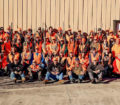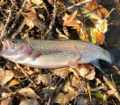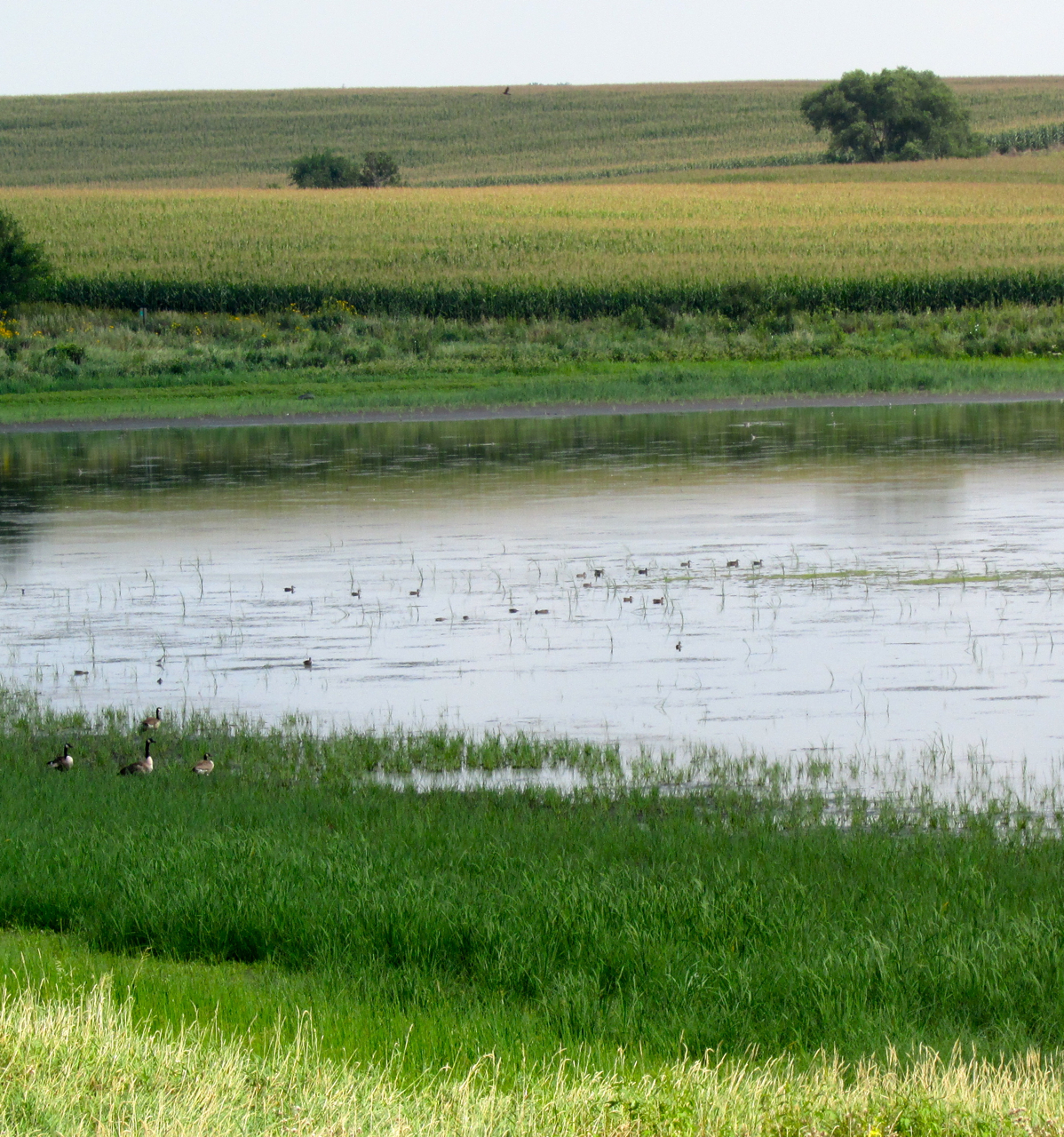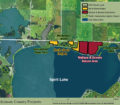By Steve Weisman
For many years, as I have traveled east of the Mini-Wakan State Park entrance (north side of Big Spirit Lake) on the Grade road or Stateline road, I’ve noticed on the north side of the road (Minnesota side) a parcel of cropland that during wet weather turns into a huge temporary wetland. Unless it is dry weather, it seems to always flood. If it is around long enough, lots of shore birds and waterfowl take up residence. Perhaps you have observed this, too, in your travels.
My concern has always been that this temporary nutrient rich water drained across the road into McClelland Slough and then into Big Spirit Lake. However, since it has always been private land, not much could be done. For several years, several conservation and clean water groups worked to secure this 195.5-acre parcel of land. It was especially important for clean water groups and lake home owners in the Iowa Great Lakes Watershed. The owners of the farmland were willing to sell, but there are always a lot of hoops to go through when working with non-profit conservation groups.
Finally, in May of 2022, Pheasants Forever Minnesota worked out an agreement with the owners to purchase this 195.5 acres of farmland using their internal land loan fund and additional partner funding. Eran Sandquist, Minnesota state coordinator for Pheasants Forever, is excited that the property has been secured. “Although Pheasants Forever purchased the property, there are so many other groups that have come together with this project. Even though the land is in Minnesota, it is in the Iowa Great Lakes Watershed and directly affects Big Spirit Lake and all of the lakes in the Okoboji chain. We have partners in both Minnesota and Iowa that have worked to make this happen. It truly is an example of conservation without borders.”
John Smeltzer, Vice President of the Spirit Lake Protective Association (SLPA), shares the excitement that the SLPA has for this project. Since a major mission of the SLPA is working towards clean water, Smeltzer notes the purchase of this farmland is crucial in continuing to improve water quality of not only Big Spirit Lake but the entire Iowa Great Lakes Watershed.
With this purchase, the project itself will now be called the Spirit Lake North Project. According to Sandquist, “This will become a multi-year project. It is common for a project like this to take 3-5 years to complete.” Upon completion, this land will become a Waterfowl Production Area owned and managed by the USFWS and open to public recreation. An estimated 90-100 acres will become a restored wetland with the rest becoming a mix of tall grass prairie and forbes.
SLPA board member Joe Ulman says, “The Spirit Lake North Project will provide an estimated 85 percent reduction in phosphorus and nitrogen annually from entering Big Spirit Lake. Plus, there will be a reduction of 30 tons of sediment per two-inch rainfall to Big Spirit Lake.”
All I can say is…Wow! That’s incredible! This effort also shows that individuals and groups can work together across state lines and without political boundaries. Certainly, I’d like to see this all happen with a snap of the fingers, but it takes time to get the land ready for the change from cropland to a restored wetland/prairie complex. Thus, the 3-5 year timeline.
Right now Minnesota Pheasants Forever is working through the planning process. Meanwhile, SLPA, as a partner in this acquisition, has agreed to fundraise for the project. According to Smeltzer, “As a board, the SLPA has agreed to give $10,000 each year for two years. We hope that the SLPA members and our friends in the community will help with our fundraising efforts. Over many years, people in the Iowa Great Lakes area and beyond have stepped up to help complete clean water projects. We hope that this will happen with the Spirit Lake North Project.”
To learn more about the fundraising options or to make a donation, contact President Kirk Huisenga at SpiritLakeProtective @gmail.com. Mailing address is P. O. Box 51,
Spirit Lake, IA. 51360. Also, check out the SLPA website at theslpa.org for more information.
As an added incentive to donors, when this project is completed, a marker will be placed at the land to show the names of donors who donated a minimum of $1000.
Ulman adds, “This project provides an exemplary example demonstrating how clean water and wildlife habitat interests can work together with willing sellers and private land owners to improve our Quality of Water and our Quality of Life in the Iowa Great Lakes region.”
Listed below are the benefits of the Big Spirit Lake North Project:
- The original wetland area will be reclaimed and water will be slowed and allowed to drop its contaminants prior to entering the Iowa Great Lakes system.
- Additional benefits of this acquisition include the following: the restoration of a large habitat complex critical to resident and migrant wildlife species; a premier public recreation/education area that will be used by citizens from many states; and demonstration of the dramatic effects that can be realized when new and diverse groups of partners address common conservation needs without regards to political boundaries.
- Wetland restoration (estimated 90-100-acres) and tall grass prairie restoration for the rest. This will provide an estimated 85 percent reduction in phosphorus and nitrogen annually and a reduction of 30 tons of sediment per two-inch rainfall to Big Spirit Lake.
- New wetland and grassland habitats for wildlife, reduced soil erosion, improved water quality, reduced runoff, reduced flooding and sequestration of carbon.
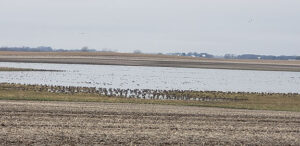
(photo submitted) This photo shows flooding occurring on the current cropland of the Spirit Lake North project. Part of the plan is to turn this often flooded parcel of land into a restored wetland.
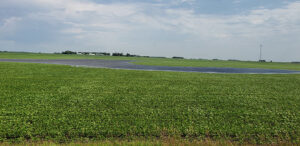
(photo submitted) After a relatively dry spring, this flooding is the result of a three-inch rainfall in July of 2022.

